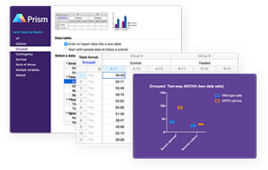 |
|
| Scribus v.1.3.3.12 About screen. |
Above and Beyond Word Processors
Indulge your creative side with the assistance of desktop publishing software
For creating general documents, it’s hard to beat the current crop of word processing applications. Whether your program of choice is Corel’s WordPerfect, OpenOffice.org’s Writer, Microsoft’s Word, or any one of a number of other word processors out there, they can all create quite elaborate documents and most people will never need anything more. However, if you have ever tried to create a more complex document with carefully positioned graphics and tables, only to have them suddenly pop into a totally new arrangement when you go back to edit some text, then you need to investigate one of the various desktop publishing (DTP) packages available. The ability to control this placement can be critical whether you are dealing with the design of a promotional brochure for the company, creating poster presentations, or creating project manuals and other documentation. I have also found that creating pages for online training systems, such as Moodle, can be much less frustrating using a desktop publishing system than it can be when using a word processor.
These programs allow you to control placement of objects, be they images text or lines to a degree that just isn’t possible with even the most advanced word processor. On the other hand, while you could create just about any document with a desktop publishing program that you could with a word processor, at least visually, I don’t think you’d like to, as one of the trade-offs is that DTPs require a great deal more manual placement of objects. Given the configuration options available in most word processors today, such as how graphic placement is handled, there is definitely a gray area where the features of the two products overlap.
Commercially, the two heavy weights are currently QuarkXPress 8 (List: $818.99 USD) and Adobe InDesign CS5 (List: $1,899.00 USD). Both of these applications are loaded with features, which doesn’t mean they are necessarily easy-to-use, though both are improving. However, this is true of many of the DTP packages currently available. While they vary in degree, most of them are not what I would call intuitively easy-to-use. Obviously, it helps if you have familiarity with the printing business, or at least in the graphic arts, so that the terminology isn’t completely foreign. However, that doesn’t eliminate the problem. If you actually try using a number of the DTP programs, you will see that for the same type of function, say attaching a caption to a photograph, the procedures may be totally different. The end result is a generally steep learning curve. Both QuarkXPress and Adobe InDesign are engineered to allow more than one person to work on a projects layout and design at once.
Unlike InDesign, which incorporates features from a number of Adobe products, Adobe PageMaker (List: $499.00 USD) is targeted more for performing page layout with items generated in other packages. I have found PageMaker to be a very capable package, but can confirm that it has a steep learning curve, particularly for taking advantage of its more advanced features. While it has a clean interface, it can be challenging to identify how the condensed features of it interact with each other and what effect they’ll have on the selected object. I’m sure this becomes less of a problem for frequent users, but if you only use if for a few sessions a month, the steep learning curve becomes even more aggravating.
Office Publisher (List: $169.00) is Microsoft’s entry into the desktop publishing field. I have no direct experience with it, so can not make any recommendation concerning it. However, it is supposed to be designed for use by small businesses, schools and other organizations and features a short learning curve, making it easy to start with. Currently, Office Publisher 2007 is shipping, but the release of Office Publisher 2010 is supposed to be imminent.
Unlike all of the previously mentioned applications, Scribus (List: Free) is an Open Source DTP application available for no charge. While I’m sure that the free part caught a number of peoples attention, another attention-getter is the breadth of platforms to which it has been ported. Currently, it can be run on Linux/UNIX, Mac OS X, OS/2 Warp 4/eComStation and Windows desktops. (For those unfamiliar with it, eComStation is effectively an upgrade to IBM”s discontinued OS/2 Warp operating system.) I don’t find the interface to Scribus quite as polished as some of the commercial apps, specifically Adobe InDesign and the most recent version of PageMaker, but that is a relatively minor point. Of more importance to me is that, in general,
I find Scribus somewhat easier to use and have experienced fewer system glitches with it than with PageMaker. In fairness, the number of systems in which I have tried comparing these applications has been quite limited, so it is quite possible that these issues are because of an idiosyncrasy of these systems, whether resulting from the operating system, conflicting DLLs, or just a faulty configuration. The fact that I can load this application onto a USB drive and run it from the PortableApps menu on just about any PC is a major plus, though admittedly being free does tend to skew your perception of any bugs.
Probably the biggest draw back I’ve encountered with Scribus is that the import and export functions are much more limited than the higher level commercial products. This is a point the developers directly address, saying considering the amount of time and effort it would take to reverse engineer all of the different versions of their competitors’ file formats, they consider it much more valuable to put their time into improving Scribus’ functionality. This is a quite reasonable approach for anyone not running a service bureau that has to deal with job submissions in a wide range or formats. And, personally, while I haven’t tried it with the most recent version of the Adobe products, I still frequently had to do at least a little tweaking of documents whenever you did perform an import or export.
However, I would say that this is more the expectation than the exception with almost any product. It doesn’t necessarily reflect any development failure, but more just the different way the applications and their files are architected. There is frequently no direct one-for-one substitution, so we probably should be more surprised that there aren’t more discrepancies. I frequently see these differences when migrating documents between different word processors, or even different versions of the same word processor. It has also been my experience that the more complex the document, the more likely these discrepancies are.
One definite advantage I can see for selecting one of the Adobe products is that a large support industry has grown around it. Whether you are looking for live training courses or instructional books, you definitely have a more diverse choice with Adobe. In terms of understanding InDesign and its features, a very useful book appears to be RealWord Adobe InDesign CS4 by Martin Kvern and David Blatner [Adobe Press/Peachpit Press, ISBN-13: 978-0-321-59243-9, 840 pp, $54.99 USD ©2009]. To get a better idea of how to use these features and perform various tasks, check out the book Adobe InDesign CS4 How-Tos: 100 Essential Techniques by John Cruise and Kelly Kordes Anton [Adobe Press/Peachpit Press, ISBN-13: 978-0-321-59094-7, 272 pp, $24.99, ©2009]. While information and help on using Scribus can be found in a number of places online, including the Scribus Wiki, there is much less printed documentation available. The only printed documentation I could locate for Scribus was the Scribus: Open-Source Desktop Publishing: The Official Manual by Christoph Schäfer and Gregory Pittman [FLES Books Ltd., ISBN-13: 978-0956078001, 452 pp, $49.95, ©2009] for version 1.3.3 and I have been unable to obtain a review copy of it, so cannot comment on its quality.
Still, if you are at the point of deciding whether your needs have outgrown the capabilities of your word processor or not, it would seem to make sense to try out the free one first to get familiar with the different paradigm that DTP uses. Once you’ve done that, if Scribus doesn’t meet your needs, you can move on to trying the others, as most do have trial versions available. The question may well come down to how much time you need to invest to become proficient enough to perform a valid selection analysis.
In any case, these can be valuable tools for those who can think outside of the box, as they can be used for many things other than printed document design. I’ve also found them useful while doing screen design and creating online training sessions. Their flexibility and value is limited only by your imagination.
John Joyce is the LIMS manager for Virginia’s State Division of Consolidated Laboratory Services. He may be contacted at [email protected].
About.com Desktop Publishing– desktoppub.about.com
Adobe PageMaker– www.adobe.com/products/pagemaker
Adobe Press– www.AdobePress.com
Adobe’s InDesign CS– www.adobe.com/products/indesign
Corel WordPerfect– www.corel.com
Desktop Publishing (Wikipedia)- en.wikipedia.org/wiki/Desktop_publishing
DTP Features (laidout.org)- www.laidout.org/dtpcompare.html
eComStation– www.ecomstation.com
Microsoft Office Publisher- office.microsoft.com/en-us/publisher/default.aspx
Microsoft Word– www.corel.com
OpenOffice.org Writer– www.OpenOffice.org
Peachpit Press– www.peachpit.com
Portable Scribus– sourceforge.net/projects/portablescribus
QuarkXPress– www.quark.com/products/xpress
Scribus– www.scribus.net
Scribus Wiki– wiki.scribus.net/index.php/Index




